Even as the Polaris A3 was being developed, thoughts in the Fleet Ballistic Missile community turned to its successor. It would have to fit into the existing SSBNs, but there was still significant room to grow the missile, as the shock protection had been massively over-designed for the 54" diameter Polaris, and all but the first 10 boats could accommodate missiles up to 74". The big question was what this new missile would offer that would make it a good investment so soon after Polaris A3, particularly as the wider Navy was wary of diverting more funds away from its traditional missions.
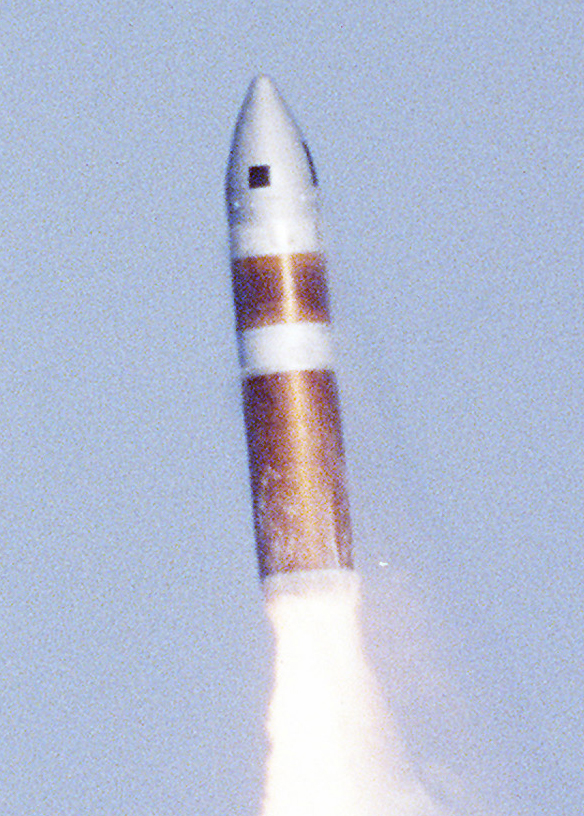
The ultimate answer was a new technology, Multiple Independent Reentry Vehicles (MIRV). Polaris A3 had pioneered a Multiple Reentry Vehicle (MRV) system that placed a trio of small warheads in a triangle around the target, to maximize destruction in an urban area, particularly in the face of the Soviet's new Anti-Ballistic Missile (ABM) systems. The idea behind MIRV was to fit even more warheads onto a single missile, with a guided bus that would place each on course for a different target before releasing it and adjusting course to the next one. This would not only make the new missile cheaper per target, but also more effectively saturate ABM systems. First, the new technology would separate the warheads more widely, reducing the chance that a single defensive missile could take out more than one. Second, it was pointed out that the most effective decoy was one that was the same weight and shape as a real warhead, which meant it might as well actually be a warhead.
But there were still questions to answer on two important issues: range and accuracy. Many advocated for increases in both characteristics, although the Special Projects Office avoided committing itself to increases in either. The range of the Polaris A3 was considered adequate, as it gave sufficient area for the submarines to patrol in and still hit their targets, even in the face of expected advances in Soviet ASW. The MIRV design of the new missile, know as Polaris B3, did give planners the option of removing a few warheads to extend the range should that become necessary, a capability that no other missile had. Accuracy was a trickier matter to resolve. Many of those who were in favor of making the missile more precise hoped to challenge the Air Force's monopoly on attacking hard targets like ICBM silos. The SPO was wary of this, as it would be an abandonment of the FBM's traditional mission as an invincible counter-city deterrent, and new accuracy requirements would impose considerable risk on the program.
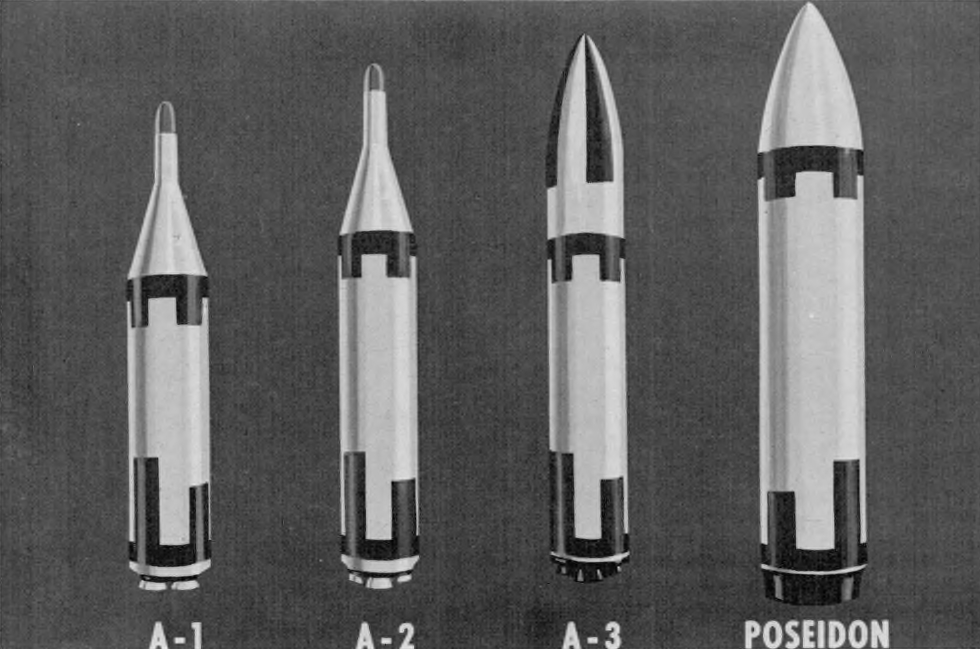
But a major overhaul of guidance was inevitable, as the Q-guidance method used on the earlier missiles wouldn't work with MIRVs, which needed explicit knowledge of where the bus was to function. As a result, the DoD pushed for greater accuracy, reasoning that it would be easier to do it while the system was being reimplemented anyway. This was largely driven by Secretary of Defense Robert McNamara's fascination with limited nuclear war and sending signals, which largely revolved around striking the Soviet nuclear force instead of cities. Eventually, the two sides compromised, and a 50% improvement in accuracy over Polaris was implemented as a goal instead of a requirement, which meant it could be abandoned if necessary to meet cost and schedule. The SPO also won another battle with the DoD over warhead selection. The Pentagon wanted them to use the Mk 12 reentry vehicle carrying the W62 warhead, which was being developed for the Minuteman III ICBM. The SPO was concerned about using an RV that they hadn't developed, and managed to win the day with the Mk 3 RV and W68 warhead, developed specifically for the new missile and weighing half as much. Each W68 had a yield of only 40 kT, far less than on any previous ICBM and half of what Livermore had promised, but sufficient given the 500 yard accuracy the system apparently achieved. The missile was designed to be capable of carrying a pair of the much heavier Mk 17 RVs, each bearing a megaton-range W67 warhead to kill hard targets. This didn't sit well with the Navy, who were concerned about the loss of flexibility inherent in having two different types of warheads on their submarines, and these were ultimately never deployed.
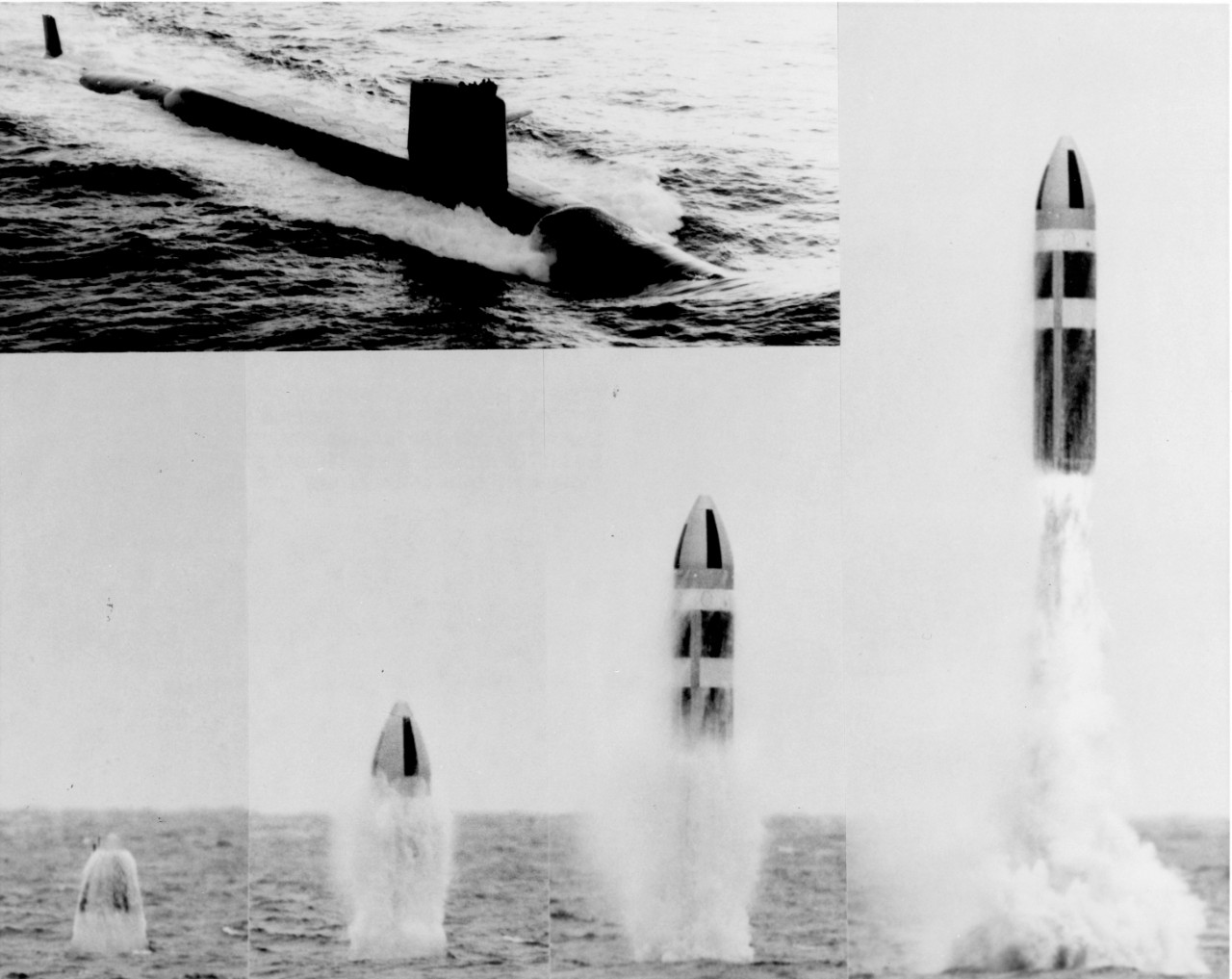
A Poseidon launch from Casmir Pulaski
The new missile was announced to the public in January 1965 as the Poseidon C3, the name change intended by the Johnson Administration to placate critics who claimed it wasn't developing new strategic systems. The new missile would replace the special-purpose digital computer used on the Polaris missiles with a general-purpose system based on the computers that Draper's group was developing for Apollo. It had about 5000 gates, 100K of ROM, and 12K of plated wire RAM, chosen because it was radiation-hard, a serious concern in the face of the new Soviet Galosh ABM. This also drove extraordinary efforts to harden the warheads, which were said to be four times harder against X-ray radiation (the primary kill mechanism for a nuclear ABM) than any warhead before or since, in part thanks to a protective coating that peeled off on reentry, when the warheads had separated and the atmosphere would soak up a lot of the X-rays.
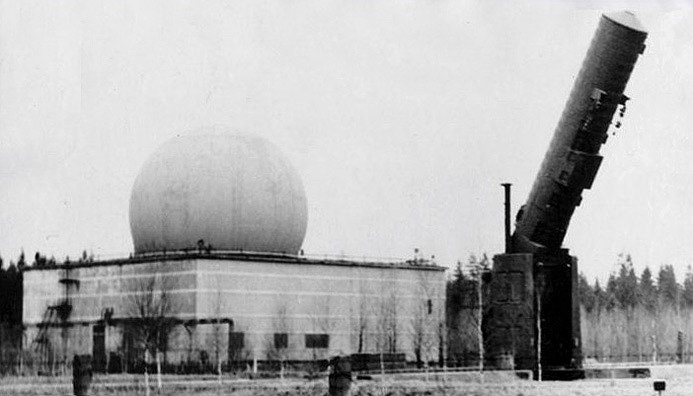
ABM-1 Galosh
The resulting missile was generally conventional, a two-stage design with each solid rocket motor exhausting through a single steerable nozzle. After the second stage's thrust was terminated, the bus would detach and place each of the warheads on an individual trajectory. This required precise control of the rockets, which is easy enough with liquid thrusters, the method the Air Force used. The Navy was not willing to place dangerous liquids on its submarines, and instead had a central gas generator which feeds eight pairs of nozzles. Normally, these are balanced, but a valve allowed one side of each pair to be closed off, giving the asymmetric thrust needed to place the bus on a chosen trajectory. However, this system is not particularly efficient, and as such, crossrange, the area where the warheads can be directed to land in, was limited. With a full load of 14 warheads, the maximum range of the missile was about 1800 nm, and crossrange was essentially zero. The typical loadout was 10 warheads, which allowed Poseidon to match the 2500 nm range of Polaris and gave a crossrange of around 150 nm. Taking the load down to 6 gave another 500 nm of range and doubled the crossrange. The RVs themselves also gave trouble, with early prototypes often distorting under the loads of atmospheric entry, in ways that either slowed their spin to zero and destroyed accuracy or made them spin so fast they broke up. After this was solved, another issue popped up with the ablative graphite tip of the RV. Trials had been completely successful, but production-spec versions often failed. Eventually, the problem was traced to the use of a larger furnace in the factory for production, and a number of RVs had to be recalled and modified.
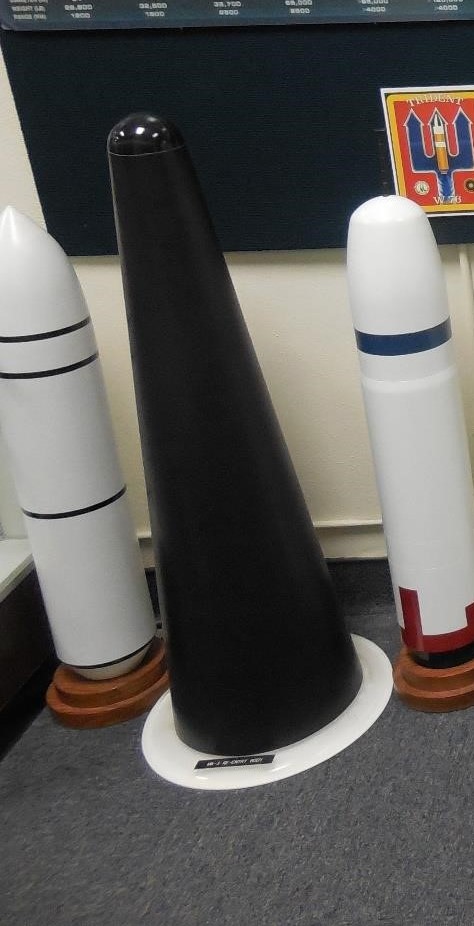
W68 in Mk 3 reentry body
Poseidon first flew in 1968, and the first submerged test followed two years later. It officially entered service in 1971, and all but the first 10 of the "41 for Freedom" were modified to carry the new missile. As each submarine carried around 160 warheads, this put almost 5,000 W68s in the FBM arsenal, close to half of all US strategic warheads if far from half of US yield. In fact, the 5,250 W68s built made it the most-produced American nuclear warhead ever. However, it wasn't without problems. The plastic-bonded explosive used in the warheads aged poorly, changing shape and weeping plasticizer, which in turn caused deterioration of other parts of the warhead. It was also very shock-sensitive, killing three men during a machining accident at the factory. Eventually, 3,200 W68s were rebuilt with a different explosive that didn't have these problems, while the rest were retired. 12 of the Poseidon submarines were being refitted with Trident I, which had a new warhead. Unsurprisingly in light of the issues with the W47 and W68, this one was designed not by Livermore but by Los Alamos. The remaining Poseidon boats soldiered on into the 80s, with the last being retired in 1991 as the Cold War wound down.
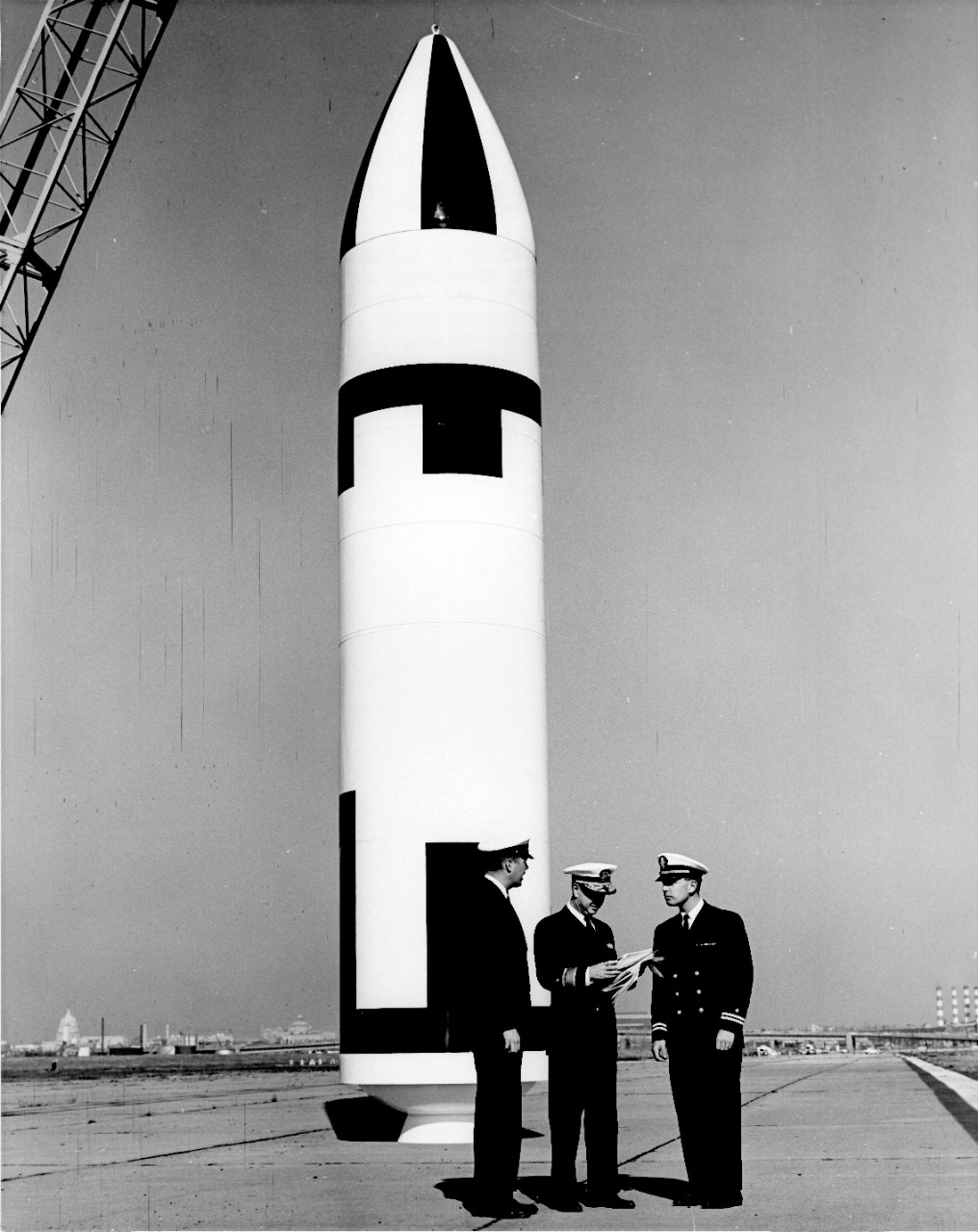
Various other improvements were made to the broader FBM system during the Poseidon period. The various navigational elements continued to be improved, most notably the Transit satellites, which were fitted with a system known as DISCOS, the Disturbance Compensation System. DISCOS used a free-floating mass inside the satellite, protected from solar radiation and the tenuous drag of the upper atmosphere, to trace a true gravitational trajectory. When the mass began to move relative to the satellite because of those effects, a set of cold-gas thrusters powered by Freon-14 adjusted the satellite to match. This meant that it could go for up to a week without the need for updates from a ground station, a significant advance over the daily updates previously required. Other attempts at improvements were failures. A proposal to replace the conventional gyros in SINS with electrostatically-supported gyros failed due to opposition from the SPO, while a proposal to fit a star sensor to the missile and increase accuracy further was used to help kill off the Mk 17 RV, but then died during the Nixon Administration, victim of political opposition to weapons designed to attack hard targets. But the idea of the star sensor wasn't dead, and it would play an important role in Poseidon's successor, Trident I. We'll talk about it next time.

Comments
So in the end, how much of poseidon was a clean sheet design, vs just making it look like a new project?
It was a new design, just like Polaris A3 was. They just changed the name instead of leaving it the same because they had different political goals.